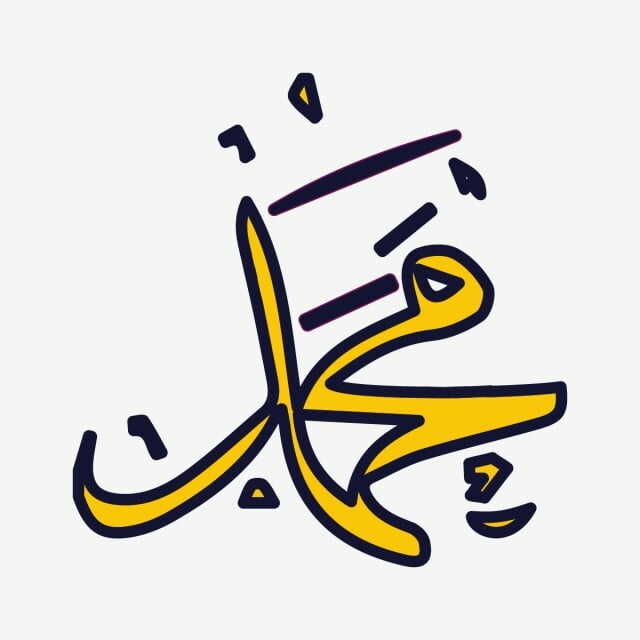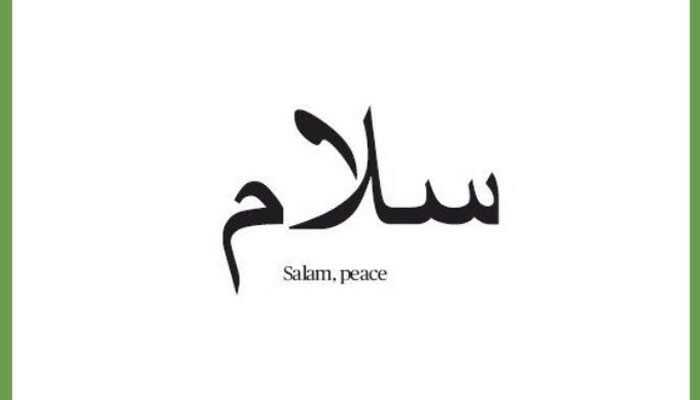Address
304 North Cardinal St.
Dorchester Center, MA 02124
Work Hours
Monday to Friday: 7AM - 7PM
Weekend: 10AM - 5PM

The Prophet Muhammad صلى الله عليه وسلم was born around 569-571 AD, 50-55 days after the Yemeni King Abraha’s failed invasion of Makkah.
Abraha aimed at destroying the Kaaba as he wanted people to make the pilgrimage to Yemen instead of Makkah. The year is also known as ‘aam Al-Fil (Year of the Elephant). It describes the event in Chapter 105 of the Qur’an, Surah Al-Fil (The Elephant) LINK.
You can read a more neutral approach here: LINK.
Let’s take a look at the timeline of events in Prophet Muhammad’s صلى الله عليه وسلم life.
I will take the year of birth as 571 AD, as I feel it is the most correct.
571 AD: Muhammad صلى الله عليه وسلم was born. He was born two months after his father Abdullah passed away. After a few months, he was sent away to the rural areas to be weaned, as was the custom during those days. The rural areas were where the purest and uncorrupted form of Arabic was spoken as there was no outside influence on the language, in contrast to Makkah which was a major center for trade. Also, the child’s early development would be in the good and unspoiled village environment, which would allow him to grow strong and healthy.
Prophet Muhammad صلى الله عليه وسلم was put in the care of a lady from the tribe of Hawazen.
571-573 AD: Prophet Muhammad صلى الله عليه وسلم was raised by his foster parents
573 AD: Prophet Muhammad صلى الله عليه وسلم returned to his mother.
575 AD: Prophet Muhammad صلى الله عليه وسلم mother Aminah passed away. His grandfather Abdul Muttalib took him under his care.

Let’s take a look at the timeline of events in Prophet Muhammad’s صلى الله عليه وسلم life.
I will take the year of birth as 571 AD, as it is the most correct.
571 AD: Muhammad صلى الله عليه وسلم was born. He was born two months after his father Abdullah passed away. After a few months, he was sent away to the rural areas to be weaned, as was the custom during those days. The rural areas were where the purest and uncorrupted form of Arabic was spoken as there was no outside influence on the language, in contrast to Makkah, which was an important centre for trade. Also, the child’s early development would be in an excellent and unspoiled village environment, which would allow him to grow strong and healthy.
Prophet Muhammad صلى الله عليه وسلم was put in the care of a lady from the tribe of Hawazen.
571-573 AD: his foster parents raised prophet Muhammad صلى الله عليه وسلم
573 AD: Prophet Muhammad صلى الله عليه وسلم returned to his mother.
575 AD: Prophet Muhammad صلى الله عليه وسلم mother Aminah passed away. His grandfather Abdul Muttalib took him under his care.
605 AD: Prophet Muhammad صلى الله عليه وسلم, settled a dispute over the Black Stone of the Kaaba. It is the holiest stone in the entire structure. A flood had damaged the Kaaba, and the Quraysh were rebuilding it. A dispute arose as to who would take the honour of putting the Black Stone in its place. Muhammad صلى الله عليه وسلم settled the debate as he involved every chieftain in action.
610 AD: Prophet Muhammad صلى الله عليه وسلم, received his first revelation whilst meditating in the Cave of Hira on the outskirts of Makkah. He was panic-stricken with the incident and rushed back to his home. https://en.wikipedia.org/wiki/Muhammad%27s_first_revelation#The_first_revelation a Few months later, he صلى الله عليه وسلم received a second revelation and soon, he accepted his duty as a messenger of God (Allah) to his people. For the next three years, Muhammad صلى الله عليه وسلم secretly preached Islam to those closest to him from his tribe.
613 AD: Prophet Muhammad صلى الله عليه وسلم, made his mission public from atop Mount Safa. http://www.resulullah.org/en/second-phase-call-addressing-makkans-safa-hill
613-622 AD: Persecution of Prophet Muhammad صلى الله عليه وسلم, and the Muslims in Makkah. These years were of hardships and sacrifice; Prophet Mohammed (saw) faced many criticisms and planned persecution by Tribal leaders and Influencers. They took all possible measures to suppress the voice of Prophet Mohammed (saw), and anyone without the hope of Allah’s help would have stopped preaching their stance and ideology of faith. Also, the preaching had no worldly gain; further, Prophet Muhammad (saw) rejected all sorts of wealth, status, and command offerings.
614-616 AD: The Muslims along with the Prophet صلى الله عليه وسلم prayed and learned about Islam secretly at the house of the Companion al-Arqam bin Abi al-Arqam (RA). LINK
615 & 616 AD: Many of the Muslims migrated to Abyssinia to escape the persecution in Makkah.
616 AD: Two of the Quraysh’s warrior noblemen, Hamza bin Abdul Muttalib (the Prophet’s uncle) and Umar bin al-Khattab, accepted Islam. Their conversion strengthened the Muslims. Though the persecution did not stop, Prophet Muhammad صلى الله عليه وسلم and his followers were able to pray in the open in front of the Kaaba after a long time.
617-619 AD: The Meccans imposed a complete social and economic boycott on Banu Hashim and Banu Abdul Muttalib (the tribe and relatives of the Prophet صلى الله عليه وسلم (along with other Muslims, demanding that Prophet Muhammad صلى الله عليه وسلم, be handed over to be executed. They wrote the boycott conditions, and their demands on parchment were hung inside the Kaaba. These days, the Muslims retired to a valley now known as She’b Abu Talib. During this period, they were sometimes forced to eat the leaves of trees to survive.
619 AD: The boycott was lifted after some respectable noblemen objected to it. The demand to lift it was raised by Khadijah (RA), Hisham bin Amr bin Harith. Four others supported his request. Meanwhile, the parchment hung in the Kaaba is eaten up by termites, ending the three-year-long boycott. In the same year, the Prophet’s صلى الله عليه وسلم uncle and guardian, Abu Talib, and wife Khadijah (RA) passed away. These two were the biggest supporters of Islam in their early years. It was a significant loss for him صلى الله عليه وسلم, and it is also known as the ‘Year of Sorrow’. Their deaths boldened the Meccans, and they began persecuting the Prophet صلى الله عليه وسلم more harshly. Sometime later, Prophet Muhammad صلى الله عليه وسلم visited Ta’if and tried to convince the people there into accepting Islam. But they turned hostile and threw stones, injuring him badly. LINK The Prophet صلى الله عليه وسلم also married Saudah bint Zam’ah in this year. Around the same time, the miracle of the moon splitting in two occurred.

620 AD: The Prophet Muhammad صلى الله عليه وسلم nightly journey from Makkah to Jerusalem (Isra’), and accession to the seven Heavens (Mi’raj) took place. The trip took place in one night, and the command for five daily prayers was received. LINK The Prophet صلى الله عليه وسلم married Aishah bint Abu Bakr (RA) in this year. During the Hajj pilgrimage of this year, Muhammad صلى الله عليه وسلم approached people from outside Makkah and invited them to Islam. Some of them accepted his message, including six people from Yathrib (later known as Madinah). This would be a turning point in history, and Islam would find a haven in Madinah within two years of this incident.
621 AD: In the following months, these new Muslims came to Makkah again, and five new converts from their town. They met the Prophet صلى الله عليه وسلم at the valley of Mina just outside of Makkah. Here, they pledged their allegiance to Islam. This is known as the First Pledge of Aqabah. Over the next year, several households in Yathrib entered the folds of Islam. The Prophet صلى الله عليه وسلم sent Mus’ab bin Umair (RA) to teach them the Qur’an. Soon, several chieftains accepted Islam as well.
622 AD: In the Hajj of this year, seventy-three new Muslims from Yathrib met the Prophet صلى الله عليه وسلم and pledged their allegiance to him. This is known as the Second Pledge of Aqabah. After this event, the Muslims slowly started to migrate to Yathrib. The Prophet صلى الله عليه وسلم himself migrated a few months when the Meccans plotted to assassinate him. His close confidant and companion, Abu Bakr (RA), accompanied him on this challenging journey. LINK Soon after, his صلى الله عليه وسلم family and many of most of his companions (RA) too migrated. This migration marks the beginning of the Islamic Hijri calendar. Here, the Muslims built the Prophet’s Mosque. Yathrib came to be known as Madinah al-Munawwarah (the Enlightened City). An Islamic brotherhood was established between the locals (Ansar or ‘the Helpers’) and the immigrants (Muhajiroon). Treaties were signed with other religious communities. LINK Very soon, small scouting units were dispatched. Their task was to monitor the activities of the Quraysh and other tribes for possible threats.
624 AD: The Battle of Badr took place. It was the first major battle against the Quraysh. It ended with a Muslim victory. LINK After the war, the Banu Qaynuqa, a Jewish tribe of Madinah, betrayed their truce. Thus, an expedition was called against them, and they were exiled. Late that year, a second battle, the Battle of Uhud, was fought against an invading army of the Quraysh. The Muslims suffered many losses. LINK
The incidents of Raj’i and Bir Ma’una occurred. LINK 1 LINK 2
Later that year, the Banu Nadir, another Jewish tribe, betrayed their treaty and plotted to assassinate the prophet صلى الله عليه وسلم, and were expelled. LINK Later that year, the Muslims marched to Badr as the Meccans had challenged them at Uhud for a battle ‘a year later.’ The Meccans too marched but retreated without an encounter. LINK This allowed the Muslims to spread Islam and consolidate their hold for one year.
627 AD: The Quraysh allied with other Arabian tribes and the exiled Jewish tribes who had settled at Khaybar. They planned to eliminate the Muslims once and for all! The Muslims took a defensive position and dug a trench at the Northern edge of Madinah. This measure was proposed by a companion Salman the Persian (RA). Hence, it is known as the Battle of the Trench. The Muslims were besieged for thirty days, and the Quraysh were forced to retreat when a storm destroyed their camp. This was a decisive victory for the Muslims, and the Meccans lost their morale and outside support. Also, this battle was a turning point after which the Muslims gained a clear upper hand in all future events. During the struggle, Banu Quraydhah, the last remaining Jewish tribe in Madinah, betrayed the Muslims. They allied with the Meccans and opened the gates of their fortress to allow the Quraysh to enter Madinah. At this point, Nu’aym, a new Muslim convert, diplomatically helped end this short alliance between them. After the battle, the Muslims besieged the Banu Quraydhah, and their combatants were executed, their women and children were taken captive. Banu Quraydhah LINK
628 AD: The Prophet صلى الله عليه وسلم set off on a pilgrimage to Makkah along with 1400 Muslims. They were stopped outside Makkah, and after brief talks, a peace treaty was signed. Though the treaty favored the Meccans, it ultimately turned out to be advantageous for the Muslims, as they could spread their religion peacefully. This is known as the Treaty of Hudaybiyyah.

A year later, Prophet Muhammad صلى الله عليه وسلمdid perform a minor pilgrimage to Makkah according to the terms of the treaty. After this treaty was signed, the Prophet Muhammad صلى الله عليه وسلم dispatched several letters to prominent chieftains in Arabia and the monarchs of the neighbouring kingdoms, inviting them to accept Islam. https://en.wikipedia.org/wiki/Muhammad%27s_letters_to_the_heads_of_state
629 ad: Muslims besieged and conquered Khaybar, which had become a threat to the Muslims. LINK After the Conquest of Khaybar, the Muslims who had migrated to Abyssinia returned to Arabia and joined their Muslim brothers in Madinah. This year was full of military campaigns against various enemies. A major battle of this year was the one at Mu’tah fought against the Romans and their allies. They outnumbered Muslims, but most of them were able to return safely. LINK
630 AD: MAKKAH IS CONQUERED! The Meccans broke the treaty of Hudaybiyyah when they, along with their allies, attacked another tribe that was allied with the Muslims. The amazing fact is that they took the entire city with nearly no bloodshed, and there were single-digit deaths! https://www.islamicfinder.org/knowledge/islam-and-sunnah/conquest-of-makkah/ After Makkah was conquered, the vast majority of Meccans accepted Islam. Thus, the once greatest enemies of the Prophet Muhammad صلى الله عليه وسلم now pledged their allegiance to him! That day, the Prophet Muhammad صلى الله عليه وسلم destroyed every single idol kept in the Kaaba and purified it from idolatry. Soon after the Conquest of Makkah, the Thaqif and Hawazen, along with other smaller tribes, challenged the Muslims. Though the Muslim army was nearly routed initially, they slowly rearranged themselves and achieved a victory. This was the Battle of Hunayn, and it would be the last major battle of Muhammad صلى الله عليه وسلم. LINK
Later that year, the Prophet صلى الله عليه وسلم marched to Taif and besieged it. But its residents held out. There were many more campaigns throughout this year as well. Several tribes accepted Islam this year. This was the year when Islam spread rapidly across Arabia.
In late 630 AD, the Muslims marched to Tabuk in Northern Arabia to meet a Roman army. The Muslims stayed there for twenty days. However, the Romans did not turn up, and the Prophet Muhammad صلى الله عليه وسلمcould make peace with many tribes of that region. Tabuk Expedition LINK
630-631 AD (9 AH): This year was also known as the year of delegations. Several tribes sent delegations to Madinah, and many of them accepted Islam. The one from the Christians of Najran and their debate is of particular interest. LINK
632 AD: The performed Hajj al-Wada’ (Farewell Pilgrimage). It would be the last pilgrimage of the Prophet Muhammad صلى الله عليه وسلم. The Farewell Sermon is a memorable one, delivered in the plains of Arafah. Farewell Pilgrimage Link 1 Link 2
This was followed by a short, painful illness after which the Mercy Upon Mankind صلى الله عليه وسلم passed away. His final advice was “The prayer, the prayer, and fear Allah regarding those whom your right hands possess (i.e. slaves)”. Read more about Prophet Mohammed (saw)
Jazakumullah Khair to those who have spent their time with me. May Allah guide us to the straight path and raise us among the followers of the Prophet Muhammad صلى الله عليه وسلم on the Day of Judgement. (Ameen)